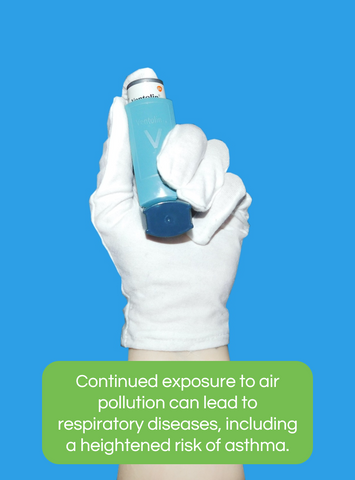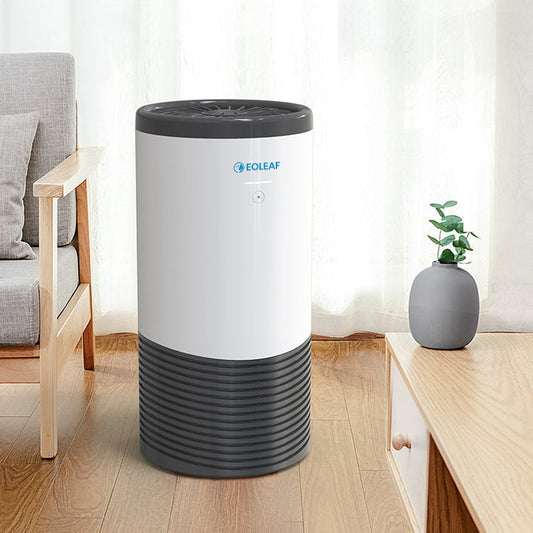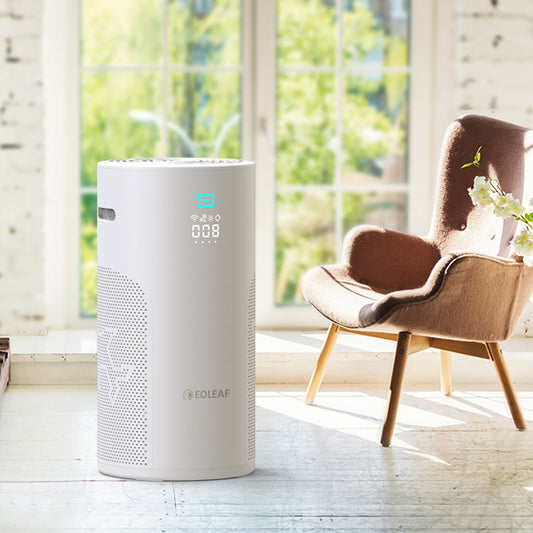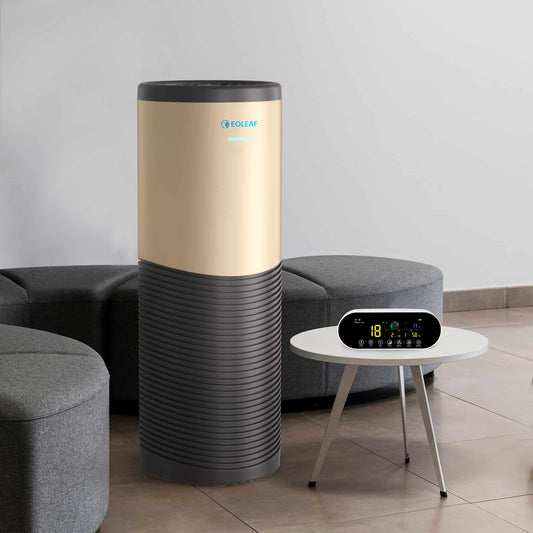The main sources of air pollution
Air pollution has become a topic of ever-growing importance in the past several years. Poor air quality affects most of us in one way or another, especially when air pollution from the outdoors gets trapped in our indoor spaces (which are 7-10 times more polluted than our outdoor spaces1). But what is air pollution? From where is it coming? With various types of pollution in our air, what are the impacts on our health and society?
What is air pollution?
According to the WHO, air pollution is when substances are released into the air that can be detrimental to both our and the planet’s health. It is a contamination of any chemical, physical, or biological means that can change the natural characteristics of the atmosphere. The WHO estimates that a shocking 99% of the world’s population breathes air that exceeds WHO guideline limits, more heavily impacting low- and medium-income communities, meaning that nearly all of us are breathing poor quality air4.
Types of air pollution and their sources
As seen in the chart below, the major offenders of contributing to air pollution typically come from the transport, residential, agricultural, and industrial sectors.

How do these types of pollution affect our health?
Each type of pollution listed above is dangerous in its own way, each having different effects on our health.
Ozone
Perhaps one of the air pollutants most heavily associated with poor air quality and climate change, high quantities of ozone in the air can lead to respiratory diseases, cough, eye irritation, and can trigger asthma attacks in those who are vulnerable.
Nitrogen dioxide and oxides
Exposure to nitrogen dioxide and oxides in our air can cause both short- and long-term effects to our health. In the short term, it can cause respiratory diseases, particularly asthma. In the long term, the effects are grisly: in addition to causing respiratory and cardiovascular diseases in children and adults, it can lead to low birthweight and increased risk of death in new-borns.
Sulphur dioxide
As with other air pollutants, sulphur dioxide in our breathing air can cause respiratory diseases and irritation, including a heightened risk of asthma.
VOCs (volatile organic compounds)
This is a subject we discuss in length here at Eoleaf. VOCs in our environment can cause a variety of negative effects on the respiratory and olfactory system, including respiratory irritation, heightened risk of respiratory diseases, and impacted sense of smell. Benzene, a VOC, is now classified as carcinogenic.
Ammonia
When exposed to ammonia in high quantities, it can cause severe respiratory and eye damage.
PM (particulate matter)
Another important subject here at Eoleaf, PM can lead to various cancers (particularly lung and bladder), heart and respiratory diseases, diabetes, and can even cause neurological damage in infants2.

What can we do to protect ourselves from poor air quality?
In the UK, the government has created a website that allows you to look at the quality of the air where you live: https://uk-air.defra.gov.uk/. Take a look to learn more about the quality of air that you breathe in more detail.
As air quality is a major public health risk that decreases quality of life for many people, steps must be taken on both individual and industrial scales to improve the quality of our air. Some of the following steps are things that you can do on a personal level to help improve air quality:
- Avoid using your car for short journeys
- Try to use public transport or, even better, bike whenever possible
- Reduce burning wood or coal in your home and garden
- When you clean or perform DIY projects, be sure to open windows to properly aerate your space
- When walking or cycling, do so as far away as possible from the road to avoid inhaling fumes
- Do not let your car idle when you are waiting in traffic or parked; shut off your engine5

Even when performing all of the above tasks, air quality is sometimes out of our control at the individual scale. A great way to protect yourself from poor air quality at home is to equip your home and/or office with an air purifier.
Here at Eoleaf, our high-quality air purifiers can protect you and your lungs from a wide variety of air pollutants and contamination. All Eoleaf’s devices are equipped with HEPA-certified filters, meaning that our filters are capable of filtering 99.97% of particles of a size greater than or equal to a diameter of 0.3 µm in a single pass. They are capable of filtering out all fine particles and pollutants up to PM0.1, germs (bacteria and viruses), moulds and spores, and allergens (pollen, dust mites).
If you need help choosing the device that is right for you and your space, we are here to help! Our goal is to help you breathe better and protect you and your loved ones from respiratory illness. Get in touch with our team of experts today to find the right air purifier for your home.
References
1 Hordé, P. (2015, April 2). L'air intérieur est 5 à 7 fois plus Pollué que l'air extérieur. Le HuffPost. Retrieved March 6, 2023, from https://www.huffingtonpost.fr/actualites/article/l-air-interieur-est-5-a-7-fois-plus-pollue-que-l-air-exterieur_53015.html
2 Qualité de l'air : Sources de pollution et effets sur la santé. Ministère de la Santé et de la Prévention. (2022, October 10). Retrieved November 17, 2022, from https://sante.gouv.fr/sante-et-environnement/air-exterieur/qualite-de-l-air-exterieur-10984/article/qualite-de-l-air-sources-de-pollution-et-effets-sur-la-sante
3 Concentrations of ozone. GOV.UK. (2022, April 28). Retrieved November 17, 2022, from https://www.gov.uk/government/statistics/air-quality-statistics/concentrations-of-ozone
4 World Health Organization. (2022). Air Pollution. World Health Organization. Retrieved November 17, 2022, from https://www.who.int/health-topics/air-pollution#tab=tab_1
5 Air Quality: Explaining air pollution – at a glance. GOV.UK. (2019, January 14). Retrieved November 17, 2022, from https://www.gov.uk/government/publications/air-quality-explaining-air-pollution/air-quality-explaining-air-pollution-at-a-glance








